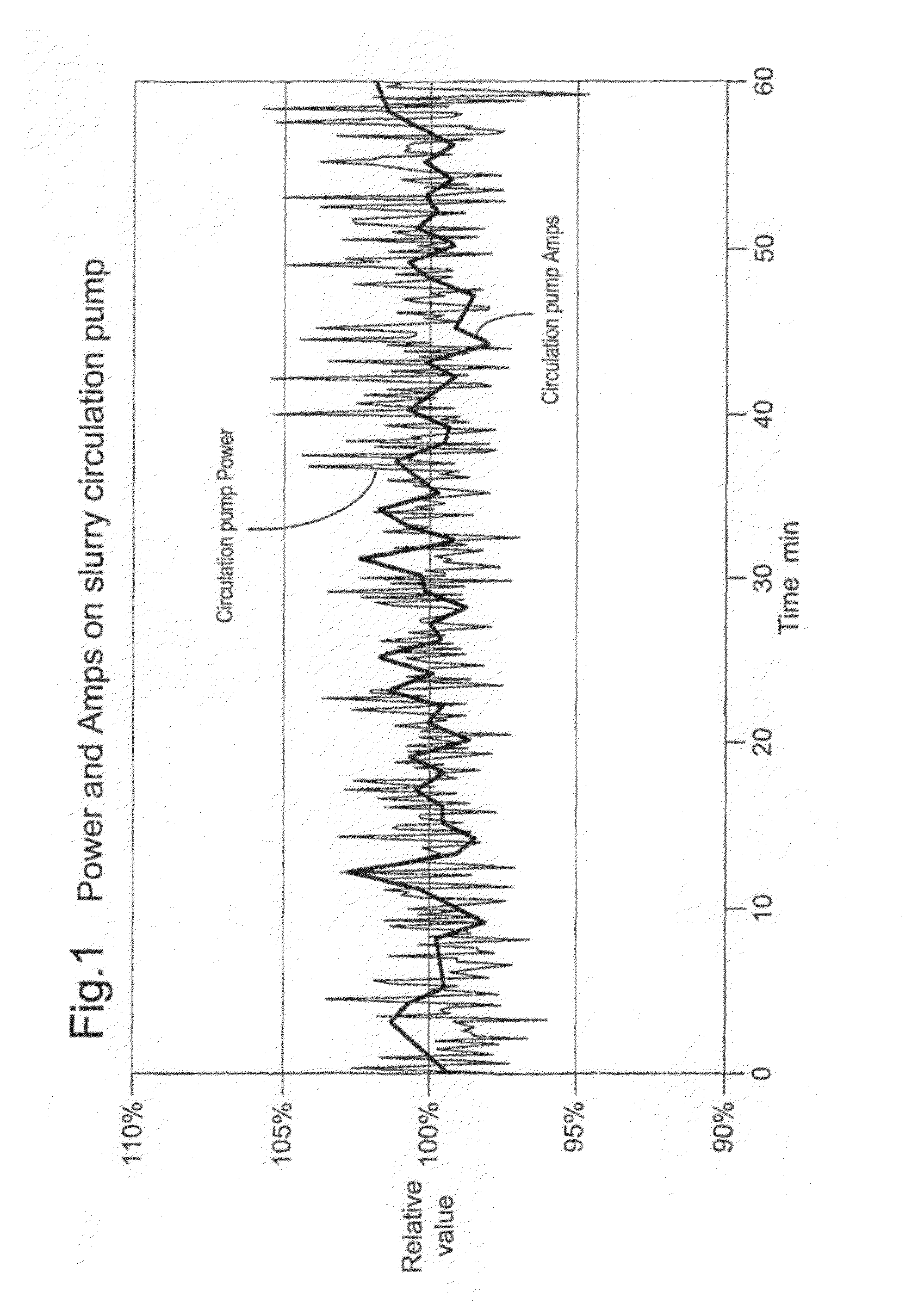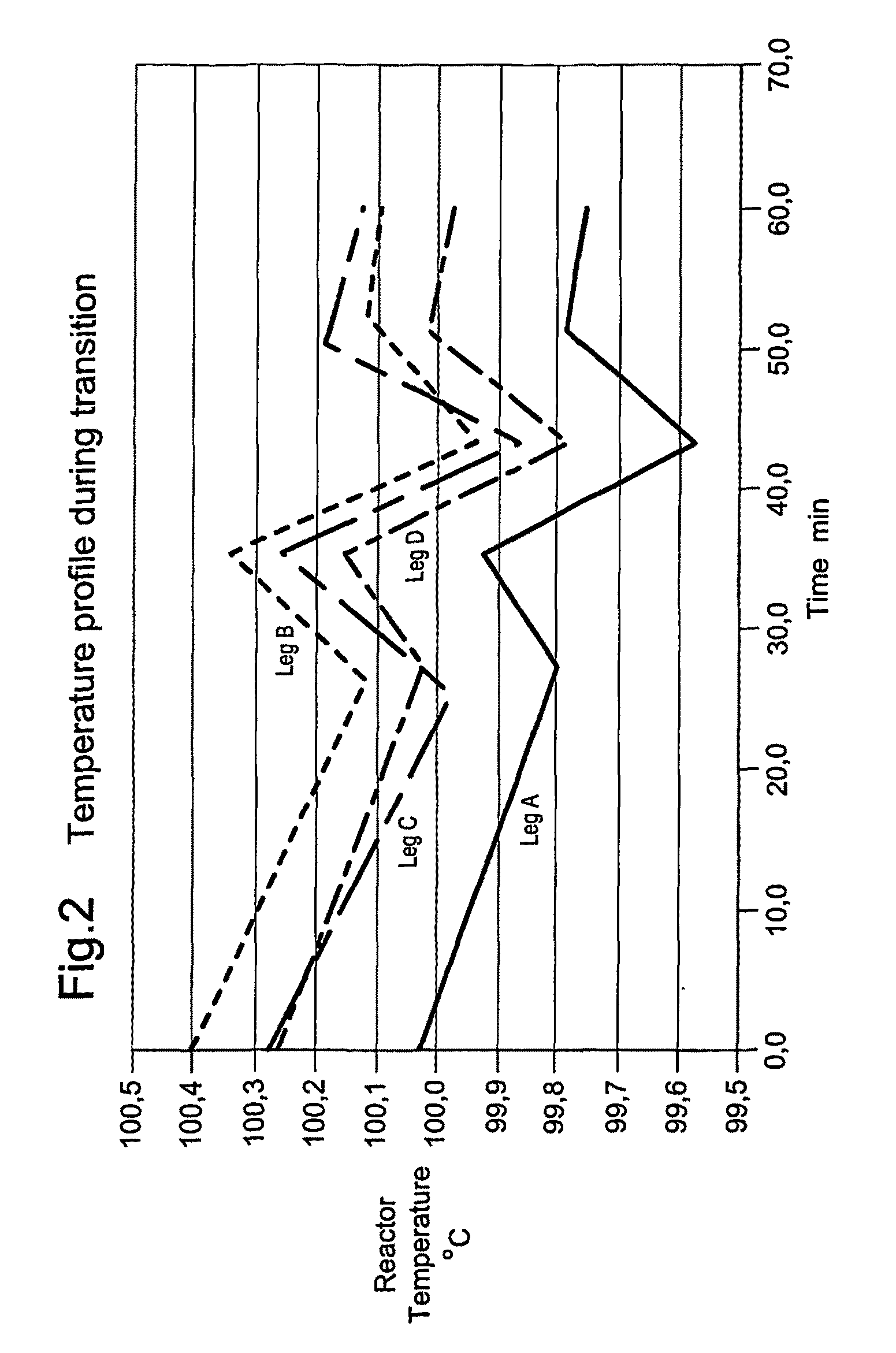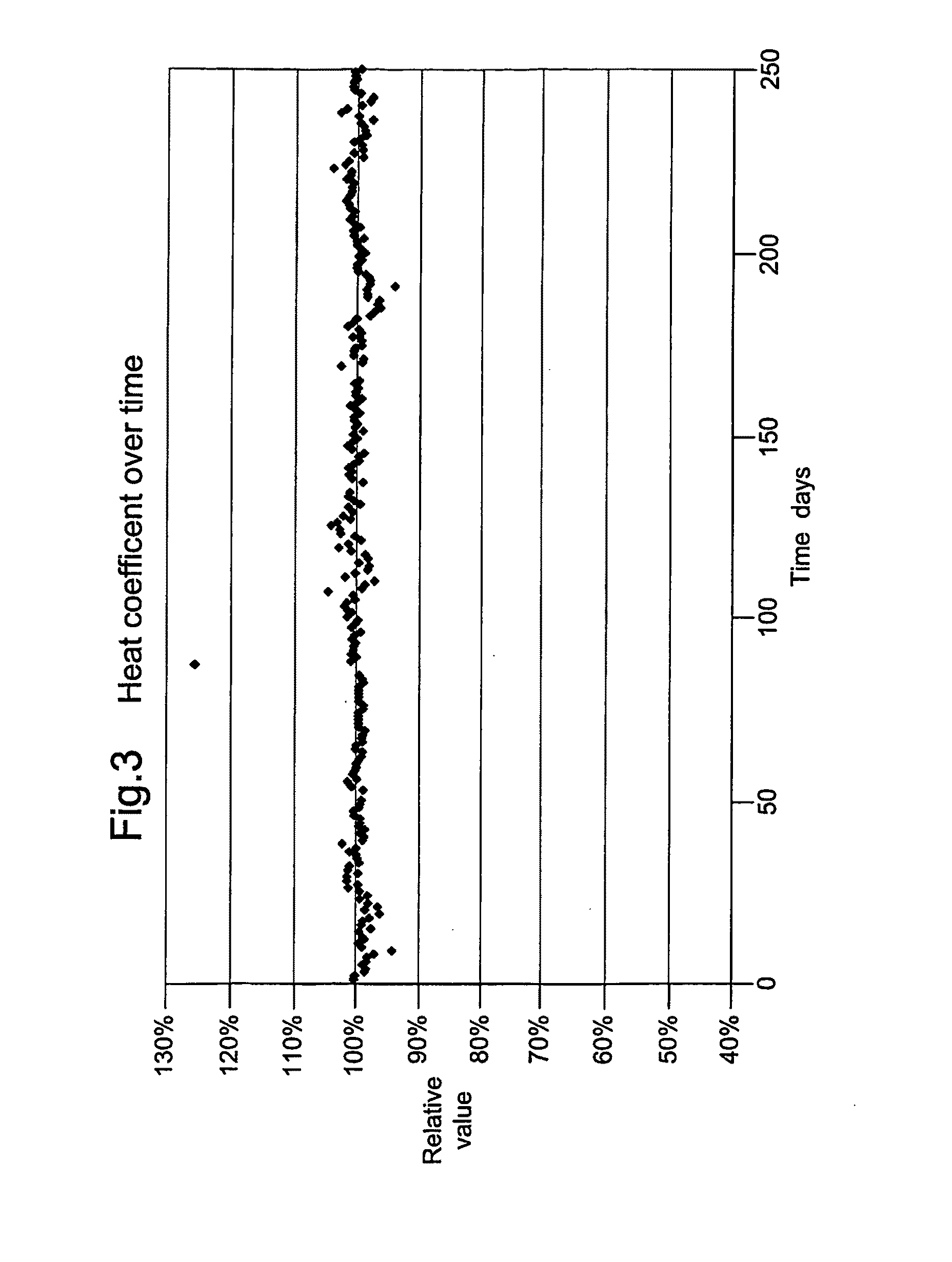Loop type reactor for polymerization
a technology of loop reactor and loop reactor, which is applied in the direction of chemical/physical/physical-chemical stationary reactor, chemical/physical/physical-chemical process, chemical apparatus and processes, etc., can solve the problems of increasing the energy consumption of slurry concentration, increasing the fouling, increasing etc., to avoid unacceptable reactor fouling, reduce the energy consumption per unit weight of polymer produced, and avoid the effect of high loop circulation speed
- Summary
- Abstract
- Description
- Claims
- Application Information
AI Technical Summary
Benefits of technology
Problems solved by technology
Method used
Image
Examples
example 1
[0092]In the following Example, ethylene was polymerised in two reactors in series. The first reactor had a volume of 96 m3 and an internal diameter along over 98% of its length of 730 mm. The solids content was 27-28 vol %. The volumetric solid content is defined as (Volumetric PE production rate / Volume of slurry exiting the reactor), where:[0093]Volumetric PE production rate=Ethylene mass feed−Ethylene mass flow exiting reactor) / density of PE][0094]Volume of slurry exiting the reactor=Volume of liquid exiting+volumetric PE production rate[0095]Volume of liquid exiting the reactor=[Sum of mass feeds in−PE mass production] / liquid density
[0096]The PE density is measured on dry and degassed powder.
[0097]The density of liquid is calculated based on any suitable model (using composition, temperature and pressure).
[0098]Circulation Pump Power Requirement
[0099]The power requirement of the circulation pump inside the loop reactor is affected not only by the pressure of the flow, but also b...
PUM
| Property | Measurement | Unit |
|---|---|---|
| length | aaaaa | aaaaa |
| internal diameter | aaaaa | aaaaa |
| internal diameter | aaaaa | aaaaa |
Abstract
Description
Claims
Application Information
 Login to View More
Login to View More - R&D
- Intellectual Property
- Life Sciences
- Materials
- Tech Scout
- Unparalleled Data Quality
- Higher Quality Content
- 60% Fewer Hallucinations
Browse by: Latest US Patents, China's latest patents, Technical Efficacy Thesaurus, Application Domain, Technology Topic, Popular Technical Reports.
© 2025 PatSnap. All rights reserved.Legal|Privacy policy|Modern Slavery Act Transparency Statement|Sitemap|About US| Contact US: help@patsnap.com



